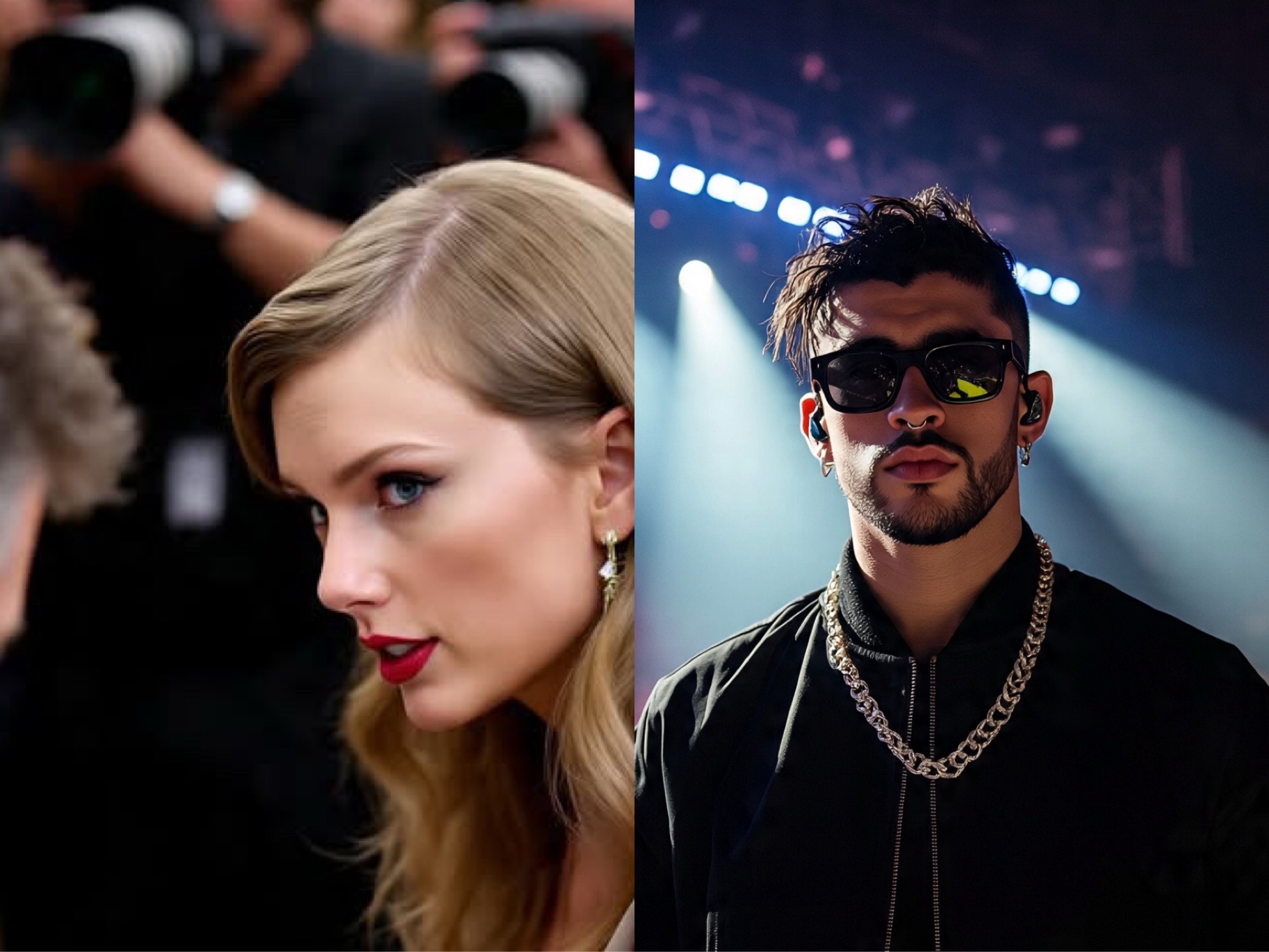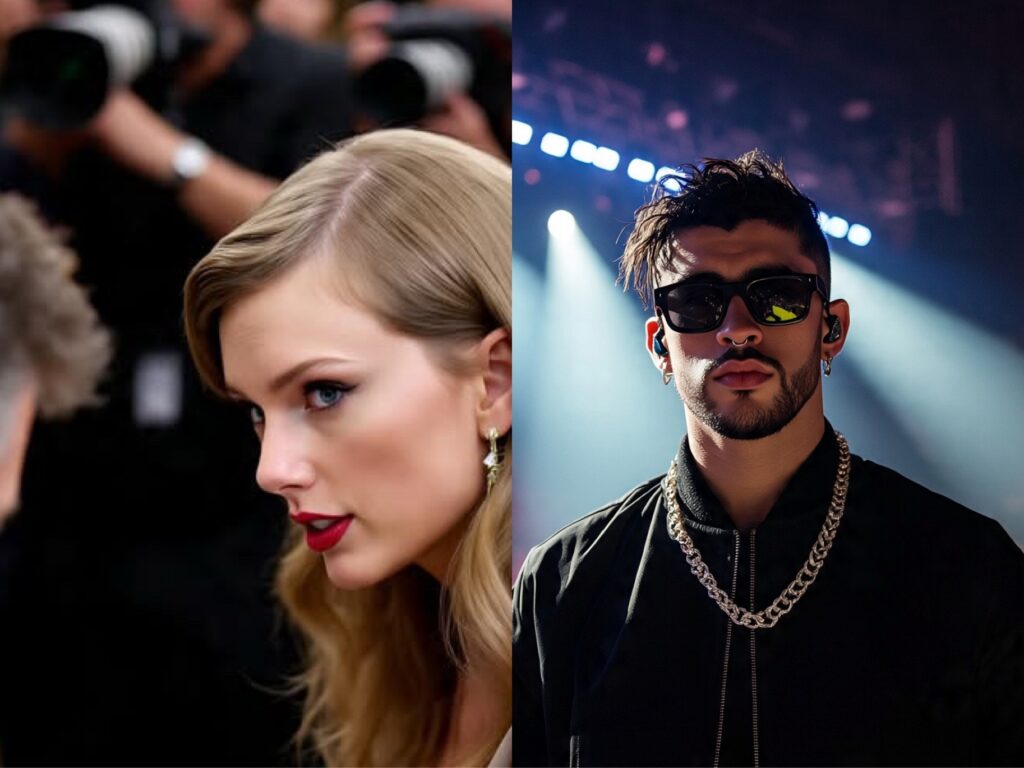NFL
Taylor Swift Reveal She Turn Down Coveted Super Bowl Halftime Show Over Unmet Demands Relating to Chiefs and Travis Kelce as the Lineup shifts to Bad Bunny

Taylor Swift Turns Down Coveted Super Bowl Halftime Show Over Unmet Demands as Lineup Shifts to Bad Bunny
The anticipation had been building: would Taylor Swift, one of the biggest pop stars in the world, headline the Super Bowl LX Halftime Show in 2026? Many speculated she was in the final stages of negotiation. But as of late September 2025, it’s clear that Taylor will not be performing — and the Super Bowl halftime slot has officially gone to Bad Bunny. Below is a breakdown of what went down.

What’s Official
Bad Bunny confirmed as the headliner for the Apple Music Super Bowl LX Halftime Show. The event will take place on February 8, 2026, at Levi’s Stadium in Santa Clara, California. The announcement was made jointly by the NFL, Apple Music, and Roc Nation.
What’s Rumored / Reported About Taylor Swift’s Involvement
For some time, Taylor Swift was a leading name in speculation for the halftime show. NFL Commissioner Roger Goodell himself said in early September 2025 that Swift was “a maybe” for the halftime show, adding that “we would always love to have Taylor play.” However, reports indicate that negotiations between Swift and the NFL (and its partners) eventually broke down. The critical factor was reportedly demands from Swift’s side that were not accepted.
What Taylor Swift’s “Demands” Seem to Have Been
Sources suggest that Taylor Swift’s team asked for several key conditions, most of which the NFL was unwilling to fully grant. While not all details are confirmed, these are the most often cited:
Ownership rights over the halftime performance Taylor reportedly wanted full ownership of her performance — meaning control over both how it’s recorded and how the recording is used/distributed. Advertising/promotional slots She is said to have requested advertising during the broadcast to promote her own projects. Standard Super Bowl contracts do not generally give halftime performers this kind of advertising control. Compensation / financial terms While much about pay was not made public, it seems there was tension over how the “exposure” provided by a Super Bowl halftime appearance stacks up versus what she would get, both in monetary terms and in terms of control. Some reports say the NFL “flatly refused” to meet certain financial or value-based demands. Scheduling / album/tour considerations Swift has been preparing a new album (“The Life of a Showgirl”) and has a busy slate of touring and promotional commitments. Timing conflicts and ensuring that a halftime show appearance wouldn’t interfere with her other plans were likely in play.
Why These Matters Are Significant
Super Bowl Halftime Shows offer massive exposure, but the performer generally does not receive direct payment from the NFL for the appearance. The value is in visibility. For an artist of Taylor Swift’s scale, questions arise: what are the trade-offs? Control over creative and commercial rights is increasingly important for artists. As artists like Swift have gained more autonomy over their work (e.g. by re-recording albums, controlling masters), demands for ownership and leverage in major appearances grow. Brand alignment and personal strategy also matters. For Swift, not just doing a big show for exposure, but aligning it with her overall artistic, business, and personal goals, is part of her decision calculus.
Why Bad Bunny Was Chosen
With Swift stepping away (or being unable to come to terms), the NFL, Apple Music, and Roc Nation selected Bad Bunny as the halftime performer. Reasons include:
Massive recent success: Bad Bunny has had huge streaming numbers, global influence, especially through recent albums and tours. Cultural and linguistic significance: A performance largely in Spanish, by a Latin artist of his stature, broadens representation on such a global stage. Timing: With Swift’s schedule, demands, or inability to reach agreement, Bad Bunny was ready and available, making him a strong alternative.
What We Don’t Know (Yet)
Exactly how much control Taylor Swift asked for and how far the negotiations went. Whether financial compensation was a sticking point. If Swift might agree to headline a future Super Bowl under different terms.
Implications & Reactions
Fans of Swift have been vocal, some supporting her decision, others disappointed. Many point out that with her level of fame, she doesn’t “need” the exposure. The NFL may also face more artists weighing those kinds of demands in future negotiations as stars increasingly seek ownership/control in major appearances. Bad Bunny’s performance could mark new benchmarks, both in viewership and in how halftime shows are conceptualized (cultural storytelling, guest appearances, etc.).
Conclusion
Taylor Swift’s decision not to headline the Super Bowl LX Halftime Show appears to stem from a combination of unmet demands around ownership, promotional rights, and strategic alignment with her broader projects. Bad Bunny steps into the role, bringing his own style, influence, and crowd-pulling power. While some may see Taylor stepping away as a loss for the NFL spectacle, many observers see her stance as emblematic of her evolution as an artist wh











